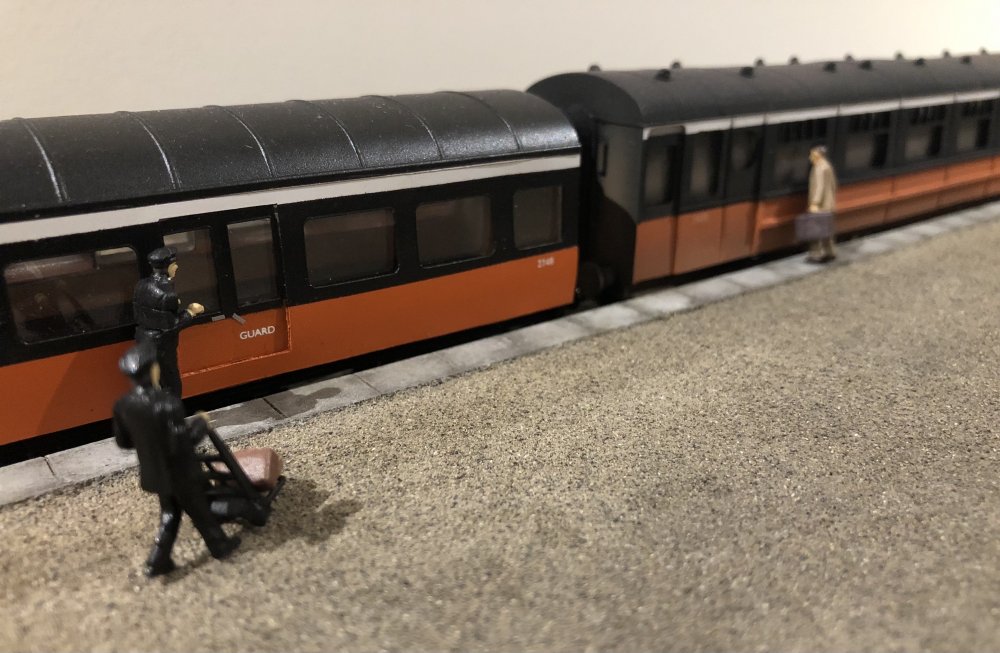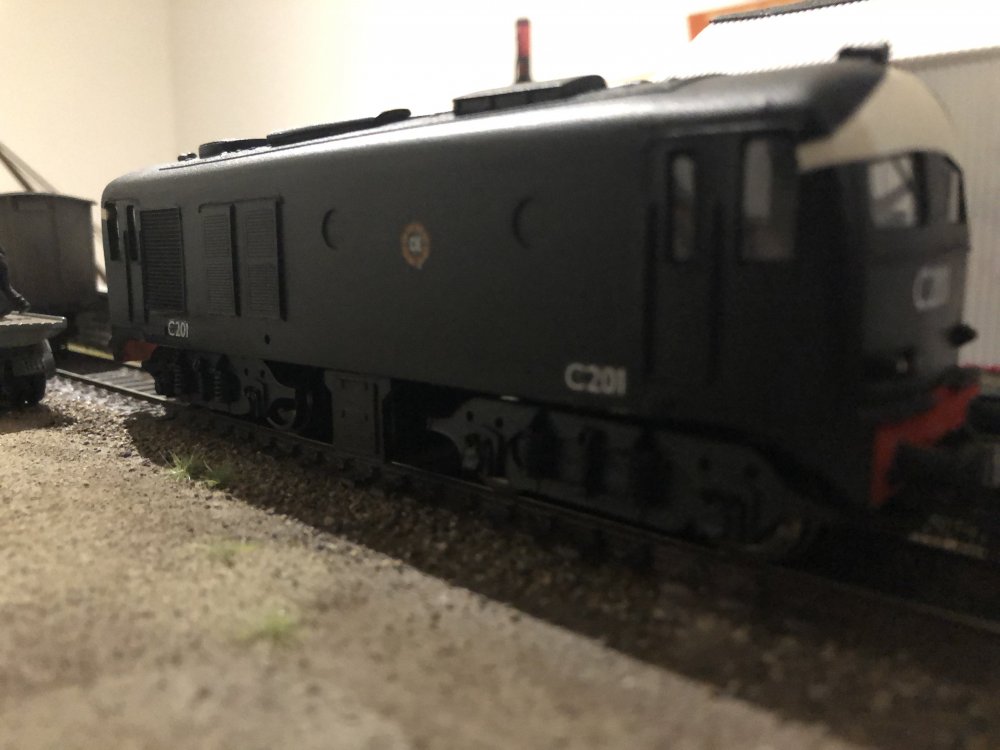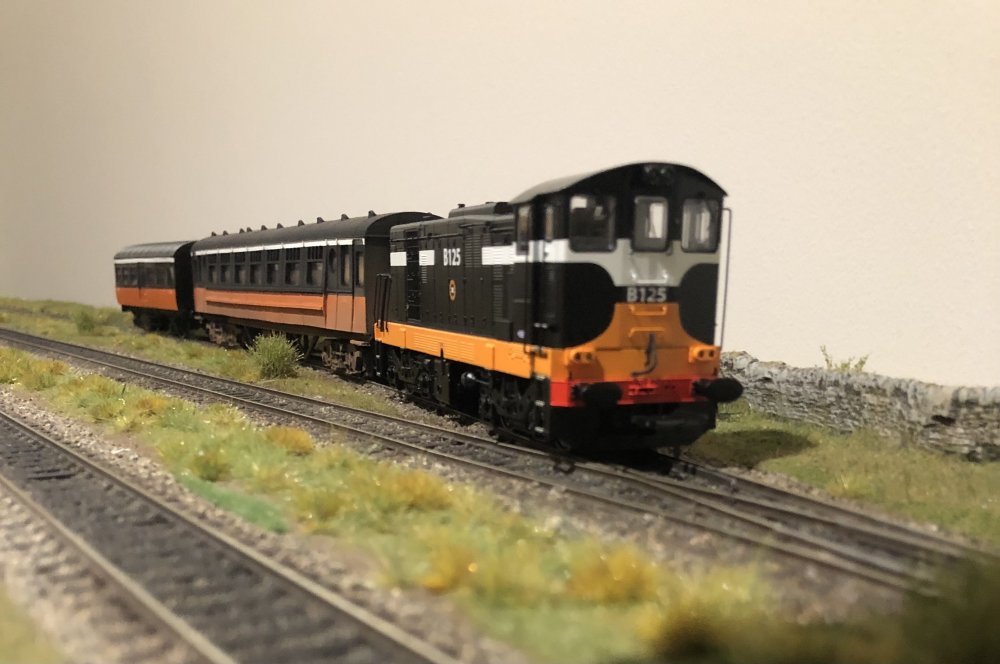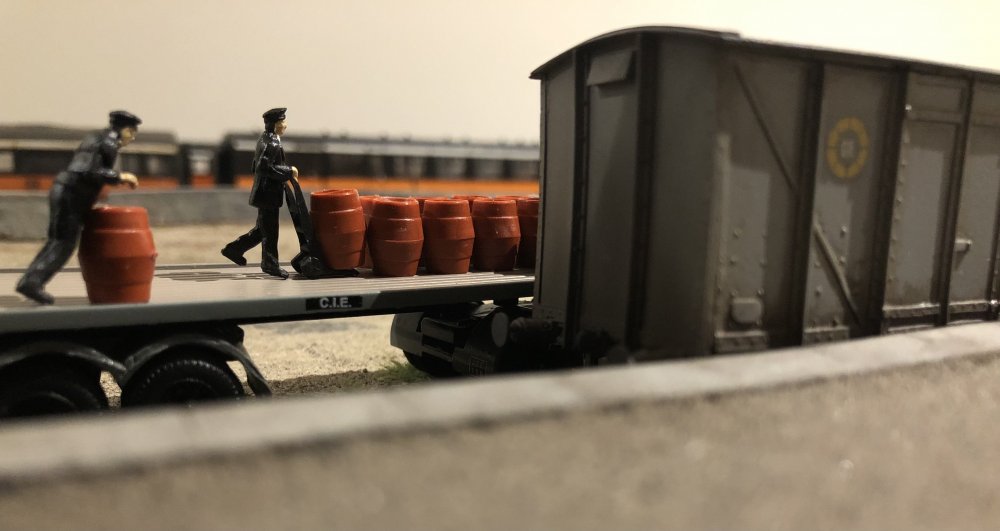-
Posts
15,923 -
Joined
-
Last visited
-
Days Won
394
Content Type
Profiles
Forums
Events
Gallery
Blogs
Community Map
Everything posted by jhb171achill
-
I remember that weird padded interior indeed - good to see steam in actual RAILWAY work in the 1990s. (And later!)
-
No, I'd need a "WT" class 2.6.4T "Jeep" to haul spoil wagons! I've nothing later than 1968............I would, though, get a RTR 80 class set if it's ever available, but I mightn't admit publicly to running it!
-
“I don’t know why he does that. Every single time he travels, he has to look in every window first….” ”It’s as well for him there’s only the one coach…”
-
Happenings in Dugort…… On one day’s train spotting in 1966, C201 has brought in the goods, but expired with a broken fuel pipe in the siding, where C230 will rescue her later. Meanwhile B125 retrieves the passenger set from the back loop road for the 11:40 to “town”.
-
The livery is too narrow gauge............ (I'll get me coat.....)
-
“I wish there was Guinness in these - we could roll one away!” ”Charlie, that joke just gets funnier every damn time you tell it…..”
-
Growlers at Goring and other Freight!
jhb171achill replied to leslie10646's topic in What's happening on the network?
Some of the Swiss stuff is indeed truly amazing, and so far free from the sort of run-down privatisation which ravaged the Austrian narrow gauge in the 90s - I was lucky to see THAT 20 years earlier in steam days..... I had a holiday job on the FR in the mid-70s, amazing then and even more so now with the WHR appended, and through trains to Blaenau - when I was there the public trains only went to DDT. Sadly, my offspring resides in South Wales, not north - so the nearest thing is the Gwili Railway, and even that is the best part of an hour away........! Will probably pay it a visit in the autumn. -
You’re right, Old Blarney - it was Donnybrook! Well remembered….!
-
Munster Simms had petrol stations, which I remember as a small child. There was one somewhere in Dublin but I have no clue where at this stage, and there was another somewhere between Dublin and Dundalk….. probably more.
-
Growlers at Goring and other Freight!
jhb171achill replied to leslie10646's topic in What's happening on the network?
I went on a Railway Touring Company supposedly all-steam trip to Myanmar a few years ago. Over a week, due to the state of the track the train never topped 25mph, and was often slower for hours on end; and it was pushed by a diesel the entire time, only in very light steam with 50lbs on the clock. An absolutely catastrophic waste of time and money - the loco used wasn't even in proper working order. It was like as if they took it out of a scrap line and lit a few old newspapers in the chimney to make smoke, and pushed it along. The schedule was nonsensically over-ambitious too - one evening we arrived at our destination at 11:30 pm, to a cold dinner of bananas and some sort of sludge - Myanmar food is by a long way the worst in Asia - despite being promised we'd be there by 6pm..... we had not eaten since 11 that morning..... often we abandoned it at some point and got a bus onwards. Myself and others complained bitterly; never, ever again. A diesel pushing a supposed steam train is just a cop-out. I'd rather trundle at 15mph along a branch line with two bogies behind a steam engine that was actually working, than travel in any train anywhere with a steam loco up front and a diesel pushing! -
Not so sure of exact internal layout, but, yes, there was table service in it. The kitchen was at one end with a side corridor round it as you suggested. While I stand to be corrected, I think the last actual kitchen cars with service entirely in an adjacent coach died with the GNR in the 1950s, and CIE in the early 60s. The NIR 1970 dining car always had a particularly garish plastic internal decor……
-
Yes, exactly! I think that without the 80s it could have succumbed even more. Those things kept it going through the troubles and a concurrent period of very severe economic deprivation. A RTR model is an essential thing now - well beyond my period of historic interest, but I'd buy one for the craic.
-
I should have added, to put it all in perspective, the historical background to this. The UTA and early NIR were acutely aware of the constraints of a lack of standardisation, so they wanted anything new after the 70 class to be as versatile as possible. The Hunslets were from Day 1 also intended to be used on the last few spoil trains, anything loco hauled (they still had quite a fleet of old steam-era carriages for busy summer days). When the 80 class were in planning, about the same time, they were to be used in 2, 3 or 5-car sets; the latter (or six car sets) to be made by joining driving trailers to create a through-corridored 5 or 6 coach set in addition to operating as 2 or 3 car sets. Also, they were always planned to be used on rugby specials and as an emergency substitute (or extra) Enterprise service.
-
Yes, exactly - though at the very outset the idea was that the spare carriages and a spare Hunslet would be used as a local set - probably on the Derry line; in those days, passenger loadings didn't exceed the equivalent of two coachloads on many services. Two standards and a driving trailer would have been adequate. This didn't happen in reality, largely because of the poor reliability of the locomotives - rarely were all three in traffic. Understandably, this led to a degree of head-shaking in the Loco Dept., where those of a more practical mind took the view that NIR would have been better off going to La Grange for three 181s, rather than Hunslet! There was political pressure put on NIR by Stormont to go to Britain rather than America, which is in itself an interesting story dating back to late UTA days.
-
That is truly superb and captures its atmosphere perfectly. Shows the value of good, realistic scenery and surface textures.
-
The second one was (a) in case the other was out of service for maintenance, and (b) the seating in it strengthened the set when busy. While not always adhered to, the original plan was that a seven coach set would be used in the summer with TWO locos, one at each end, and the driving trailer in use as a guard's van and passenger accommodation, as opposed to an ACTUAL driving trailer. In winter, a five coach set would be used with a loco at one end, and a driving trailer in use as such at the other. At the very outset, they neither went to Derry were intended to, though forays on that line did happen later on, but never for a sustained period despite various announcements now and again, and pressure from rail users' groups to have an Enterprise-like service on the line. Had the Derry Road stayed open, one wonders if they might have ventured there.....
-
If you mean when it will be in steam on a public trip, I understand that it is not yet possible to give a date, unfortunately.
.png.c363cdf5c3fb7955cd92a55eb6dbbae0.png)








